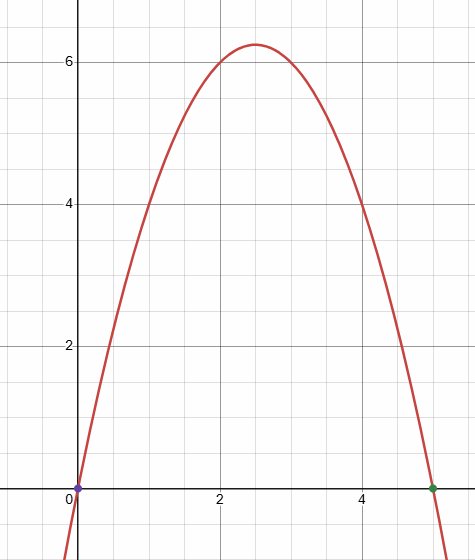SOLVING QUADRATIC EQUATIONS
Subscribe to our ▶️ YouTube channel 🔴 for the latest videos, updates, and tips.
To solve a quadratic equation which is in the form
ax2 + bx + c = 0
we have three different ways.
(i) Factoring
(ii) Quadratic formula
(iii) Completing the square
Solving Quadratic Equations by Factoring
Problem 1 :
x² - 4x + 3 = 0
Solution :
x² - 4x + 3 = 0
Since the coefficient of x2 is 1, we take the constant alone and decompose it into two parts.
Factors of 3 :
The middle term alone is negative, so both factors will be negative.
x² - x - 3x + 3 = 0
x(x - 1) - 3(x - 1) = 0
(x - 1) (x - 3) = 0
x = 1 and x = 3
So, the solution is {1, 3}.
Problem 2 :
2x² - x = 12 + x
Solution :
2x² - x = 12 + x
The given question is not in the standard form, so subtract 12 and x to get rid of it.
2x² - x - x - 12 = 0
2x² - 2x - 12 = 0
2(x² - x - 6) = 0
2(x² + 2x - 3x - 6) = 0
2(x + 2) (x - 3) = 0
(x + 2) (x - 3) = 0
x = -2 and x = 3
So, the solution is {-2, 3}.
Solving Quadratic Equation by Formula
Problem 3 :
Solve
2x2 + x - 4 = 0
Solution :
Problem 4 :
Using completing the square method, solve the equation.
x2 − 6x − 7 = 0
Solution :
x2 − 2⋅x⋅3 + 32 - 32 - 7 = 0
Write the coefficient of x as a multiple of 2.
(x - 3)2 - 32 - 7 = 0
(x - 3)2 - 9 - 7 = 0
(x - 3)2 - 16 = 0
Add 16 on both sides.
(x - 3)2 = 16
Take square roots on both sides, we get
x - 3 = √16
x - 3 = ±4
x - 3 = 4 and x - 3 = -4
x = 4 + 3 and x = - 4 + 3
x = 7 and x = -1
Solving Quadratic Equations in Different Forms
Problem 5 :
3(x + 7)2 + 17 = 56
Solution :
The given question is not in the standard form.
3(x + 7)2 + 17 = 56
Subtract 17 on both sides.
3(x + 7)2 + 17 - 17 = 56 - 17
3(x + 7)2 = 39
Divide by 3 on both sides.
(x + 7)2 = 39/3
(x + 7)2 = 13
(x + 7) = √13
x + 7 = ±√13
x = ±√13 - 7
Problem 6 :
2x - 5√x + 2 = 0
Solution :
It is trinomial, even though it doesn't have square, by considering the middle term (√x). Let us try to write the other terms also in terms of √x.
2(√x)2 - 5√x + 2 = 0
Let √x = t
2t2 - 5t + 2 = 0
2t2 - 4t - 1t + 2 = 0
2t(t - 2) - 1(t - 2) = 0
(2t - 1) (t - 2) = 0
Equating each factor to 0, we get
t = 1/2 and t = 2
When t = 1/2 ==> √x = 1/2 ==> x = 1/4
When t = 2 ==> √x = 2 ==> x = 4
Problem 7 :
The height y (in yards) of a flop shot in golf can be modeled by
y = −x2 + 5x
where x is the horizontal distance (in yards).

a. Interpret the x-intercepts of the graph of the equation.
b. How far away does the golf ball land ?
Solution :
y = −x2 + 5x
a) To find x-intercept, we have to put y = 0
−x2 + 5x = 0
-x(x - 5) = 0
x = 0 and x = 5

b) The horizontal distance covered by the ball is 5 yards.
Problem 8 :
The height h (in feet) of an underhand volleyball serve can be modeled by
h = −16t2 + 30t + 4
where t is the time (in seconds).
a. Do both t-intercepts of the graph of the function have meaning in this situation? Explain.
b. No one receives the serve. After how many seconds does the volleyball hit the ground?
Solution :
h = −16t2 + 30t + 4
0 = −16t2 + 30t + 4
−16t2 + 30t + 4 = 0
−16t2 + 32t - 2t + 4 = 0
-16t(t - 2) - 2(t - 2) = 0
(t - 2)(-16t - 2) = 0
t = 2 and t = -2/16
t = -1/8
a) The positive value alone will give meaning.
b) After 2 seconds the volley ball hit the ground.
Problem 9 :
At a Civil War reenactment, a cannonball is fi red into the air with an initial vertical velocity of 128 feet per second. The release point is 6 feet above the ground. The function
h = −16t2 + 128t + 6
represents the height h (in feet) of the cannonball after t seconds.
a. Find the maximum height of the cannonball after it is fired.
b. Use the results of part (a) to estimate when the height of the cannonball is 150 feet.

Solution :
h = −16t2 + 128t + 6
a) The maximum height reached by the ball
x = -b/2a
a = -16, b = 128 and c = 6
t = -128/2(-16)
t = 128/32
t = 4
After 4 seconds it is fired, it reaches the maximum height.
When t = 4
h = −16(4)2 + 128(4) + 6
= -16(16) + 512 + 6
= -256 + 512 + 6
= 262 ft
b) When h = 150 ft
−16t2 + 128t + 6 = 150
−16t2 + 128t + 6 - 150 = 0
−16t2 + 128t - 144 = 0
-16(t2 - 8t + 9) = 0
t2 - 8t + 9 = 0
= (-b ± √b2 - 4ac)/2a
= (8 ± √82 - 36)/2
= (8 ± √(64 - 36))/2
= (8 ± √28)/2
= (8 + 5.29)/2, (8 - 5.29)/2
= 13.29/2, 2.71/2
= 6.64, 1.35
The time taken by the ball to reach the height of 150 ft are 6.64 seconds or 1.35 seconds.
Subscribe to our ▶️ YouTube channel 🔴 for the latest videos, updates, and tips.
Recent Articles
-
Finding Range of Values Inequality Problems
May 21, 24 08:51 PM
Finding Range of Values Inequality Problems -
Solving Two Step Inequality Word Problems
May 21, 24 08:51 AM
Solving Two Step Inequality Word Problems -
Exponential Function Context and Data Modeling
May 20, 24 10:45 PM
Exponential Function Context and Data Modeling